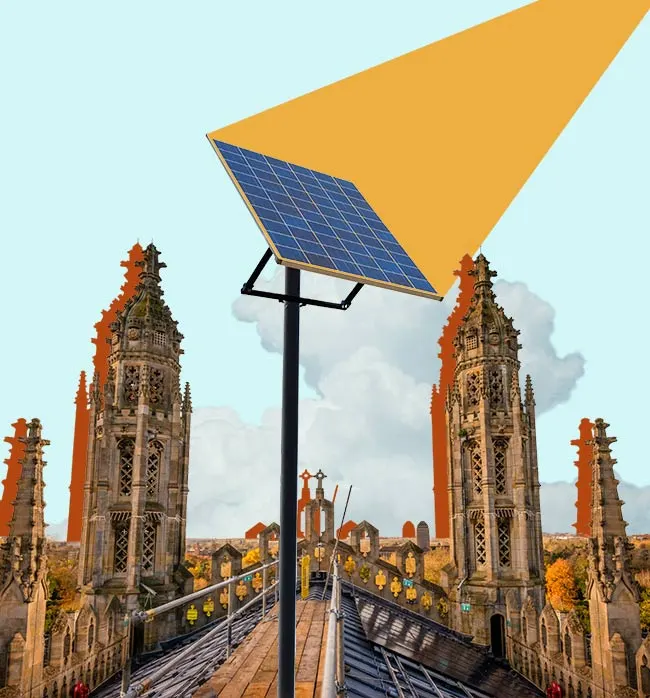
Historic buildings are ideal sites for placing solar panels to generate energy
Historic buildings are more than just markers of the past. As monuments, they are also markers of a place’s culture, and provide character to their locations, along with providing aesthetically distinct features. The preservation of these buildings, therefore, is also part of preserving the very personality of a place.
Alongside preservation, one of the highlights when it comes to structures and buildings in general is their eco-friendly nature and their possibility of being carbon-friendly. And while these ideas did not exist when these historical buildings were under construction, it has become a feature of contemporary preservation.
What’s this?
The roof of Cambridge’s iconic King’s College’s Chapel has been covered with solar panels. The 500-year-old, 289-foot-long roof has been covered in 438 photovoltaic panels. These panels will generate about 5 percent of the electricity that the college requires. What’s more is that the amount of total energy generated per year by this setup will save over 23 tons of carbon emissions, which is the equivalent of planting over a thousand trees every year.
At the same time, buildings located among the ruins of the historic city of Pompeii have been fitted with invisible solar panels. These panels will blend with the ancient construction and not obstruct any historic features, while generating electricity to power the entire historic site. As a place that is rather large and has huge energy requirements, thanks to the daily footfall of tourists, this measure can cut down on carbon emissions, as well as save on costs massively.
Why ancient buildings? And why now?
One feature of old buildings that suits them for panel installation is the area they cover. Unlike modern buildings that are vertically large, older buildings covered a larger area due to a difficulty to construct tall structures. Covering them up in panels will increase their carbon neutrality, as well as protect the very structure from climate change, which seems to be heating up.
What’s more is that adding solar panels to these buildings can be a part of their restoration, as two elements can be combined to make the building more efficient all while protecting its unique character and not harming it.